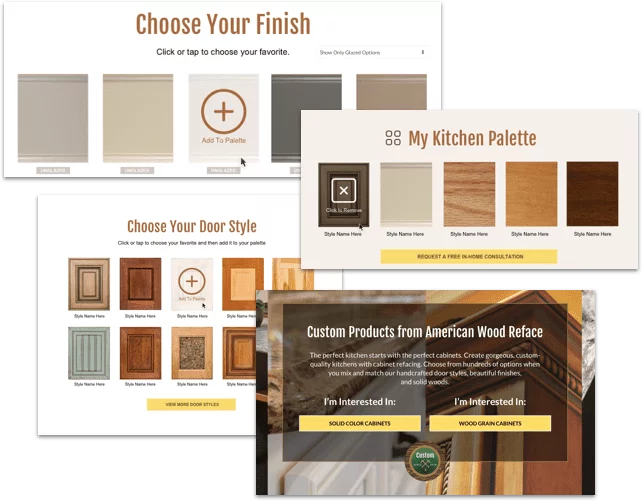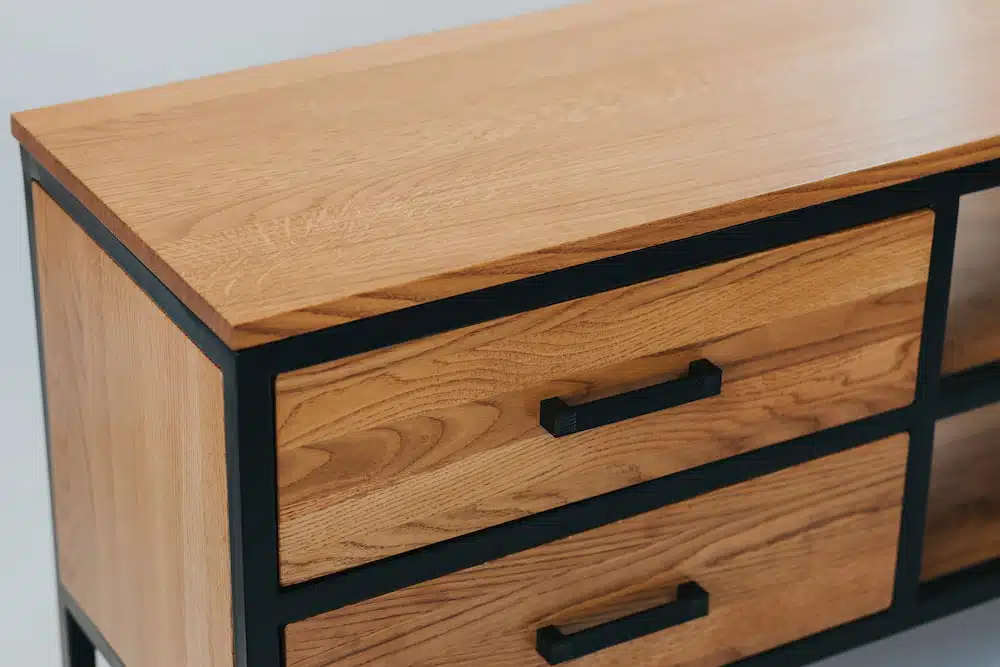
Worn-out or faded kitchen cabinets can diminish the appearance of your entire kitchen. Instead of replacing them altogether, refacing is a more cost-effective solution to improving your kitchen’s aesthetics.
Some refacers use veneers for cabinet refacing given their cost-effectiveness and wood-like appearance. However, it’s important to understand that this cabinet refacing option can present potential challenges. So, before you make a decision, take these factors into account.
1. Lack of Durability

Imagine remodeling your kitchen only to face problems after a few months due to these issues with durability when using veneers for cabinet refacing.
- Chipping and peeling. Exposure to high temperatures and moisture causes the veneers to expand, leaving unsightly chipping or peeling at the edges.
- Warping and bubbles. Veneers are thin and susceptible to warping and bubbles, which can lead to issues such as gaps between panels and doors not closing properly. These problems can also impact the cabinet’s appearance with time.
- Scratching. Veneers are not that resilient to damage. Sharp objects like knives can easily scratch the surface, leaving noticeable marks.
Instead of veneers, consider alternatives that offer greater durability and longevity. Natural solid wood has innate strength and stability, making it an excellent choice for cabinetry. In particular, select-quality solid hardwood is the pinnacle in cabinetry excellence and beauty. Unlike veneers, which are thin layers of wood glued onto a core material, solid wood does not peel or chip easily. This makes solid wood furniture last for generations with minimal maintenance required.
2. Difficulty in Repairing
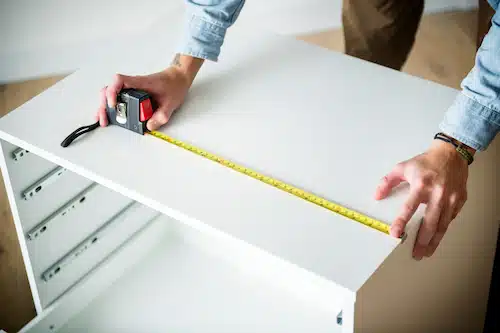
Veneers are typically about three millimeters (less than an eighth of an inch) thick. Due to this, they’re too delicate for common repair techniques, such as sanding. Attempting to repair them may only cause further damage.
If the damage is minor, you can try patching it up with putty. If it’s more extensive, you have to painstakingly peel the veneer and replace it with a new piece. You need to be precise to match the damaged section and adhere to the new piece properly to avoid any bubbles or misalignment.
If you know it’s a delicate material and keep using it, expect to encounter the same durability issues. The repair costs will mount, and frequent touch-ups can become frustrating.
If you prefer a low-maintenance option, considering alternative materials might be wise. Solid wood, for instance, can handle repairs and refinishing more effectively. While it might be more expensive initially, you can save money and effort in the long run due to its natural durability and ease of maintenance.
3. Higher Long-Term Costs
The long-term cost implications of choosing veneers for cabinet refacing can be significant. To comprehensively assess wood veneers and solid wood, here’s a table comparing them in terms of initial investment, maintenance, and repair costs.
| Initial Cost per Linear Foot | Maintenance Needs | Repair Needs | |
| Solid Wood | By linear foot: $200–$500 By total budget: $5,000–$10,000 in a small kitchen $10,000–$15,000 with new hardware and accessories/modifications | Requires only light cleaning with common materials, minimizing maintenance costs | Less prone to damage but can easily be repaired or refinished if necessary |
| Wood Veneers | By linear foot: $150–$200 By total budget:$1,000–$5,000 with new hardware but no accessories/modifications $5,000–$10,000 for a large kitchen and complete with new hardware and accessories/modifications | Needs special refinishing or resealing materials | Hard to repair and often needs replacement |
It is evident that the upfront cost of veneers is slightly more affordable. However, as previously discussed, veneers may easily show durability issues. Although solid wood’s initial expense is higher, many homeowners consider it a valuable investment due to its exceptional quality, low maintenance, and minimal repair requirements.
4. Limited Customization Options
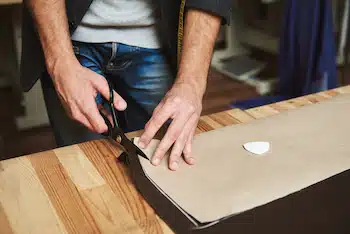
Refacing cabinets with veneers limits customization options. Veneers come with predesigned patterns and colors, making it difficult to customize beyond what’s available. This restriction can prevent homeowners from achieving a unique look or matching their existing décor. Additionally, veneers cannot withstand carving or intricate detailing due to their thinness, further limiting creative possibilities.
In contrast, solid wood is flexible, allowing homeowners to customize their cabinets according to their aesthetic and style preferences. Solid wood can accept carving, shaping, and finishing in countless ways, offering endless possibilities for customization. Whether it’s a specific type of wood grain, a custom stain, or intricate detailing, solid wood can be tailored to meet exact specifications.
This flexibility allows homeowners to create one-of-a-kind pieces that perfectly complement their home’s décor. The cabinet can also be updated or refinished in the future to match changing tastes.
5. Diminishing Aesthetics Over Time
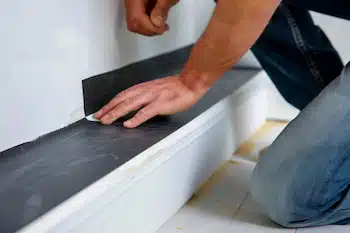
Continuous exposure to sunlight can result in fading and discoloration in veneers, while dents and scratches are the typical outcomes of daily wear and tear. Furthermore, moisture and chemicals can weaken the adhesive, causing the veneer to peel and chip. These factors collectively contribute to the gradual loss of the veneer’s initial appeal.
In contrast, solid wood is highly durable, ensuring its aesthetic appeal remains intact even with exposure to high temperatures, grease, or moisture. With minimal maintenance required, the natural beauty of solid wood cabinets makes it a practical choice for long-lasting aesthetic value.
6. Decreased Home Value
If you’re thinking of selling your house, it’s worth keeping in mind that 80% of potential buyers consider the kitchen one of the most important spaces. As a result, kitchen remodeling can be a smart move if you’re looking for an ROI ranging from 52.5% to 71.2%.
Including cabinet refacing in your kitchen remodeling is a good choice, and investing in high-quality materials ensures quick sales and great ROI. Buyers are more meticulous about kitchen cabinets and tend to pay more for high-end upgrades, choosing veneers may not be advisable.
As discussed above, one of the drawbacks of choosing veneers for cabinet refacing is their lack of durability, which may discourage potential buyers. Moreover, compared to veneers, solid wood cabinets are viewed as luxurious and timeless, so you can expect a good return on investment.
Takeaway
If you’re planning to give your cabinets a new look without breaking the bank, veneers may be an affordable option. However, while veneers can save you money upfront, they will not provide the same quality and durability as refacing cabinets with solid wood. Hence, weighing the drawbacks of veneers for cabinet refacing is crucial to help you decide if your investment is worth it in the long run.
If you’re looking for a reliable provider of top-quality, solid wood cabinet refacing, American Wood Reface is your go-to option. We guarantee exceptional results in enhancing the beauty of your kitchen for many years to come.
